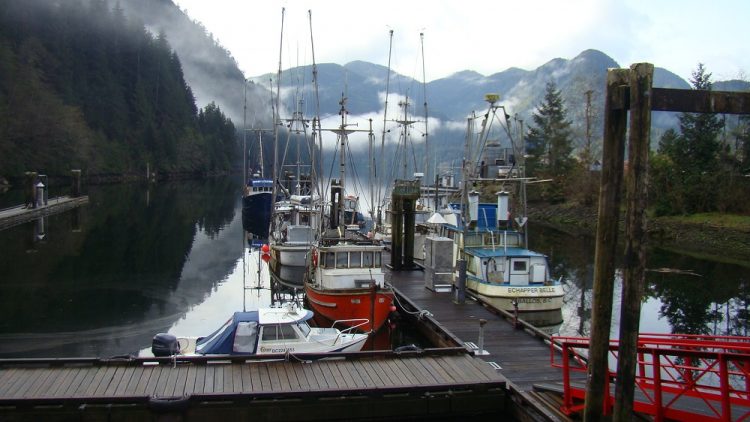Vancouver Island is the largest island on the west coast of North America. It is a little over 32,000 square kilometers in size and is 460 kilometers in length, 35 to 80 kilometers wide.
The Island is separated from the B.C. coast by several straights, the Juan De Fuca Strait on the south end of the island, the Johnston Straight on the central island, and Queen Charlotte straight on the north end of the Island.
The west coast of the island is a wild and wet land covered by ( historically) ancient forests of huge trees. Some of the world’s tallest trees still grow there. The west coast is cut by many inlets that have mountains bordering them that start at the sea and go straight up to the sky. The average height of these mountains is 800 meters with some like Mount Golden Hinde, Vancouver Island’s Highest mountain exceeding heights of 2200 meters.

The Pacific storms that pound the west coast throughout the year and more so in the winter months are laden with moisture that must be dropped in order to rise up and over the Island mountains. So the west coast receives much more rain than the east coast of the island. Truly a rain forest. The west coast is spotted with small islands, hot springs and many large rivers reach the sea there. An incredibly beautiful place. A place of waterfalls and hidden lakes. A place of mists and trees. A place of wonder.
The west coast communities are small and isolated, some are only reachable by boat or seaplane. All have resource-based economies of fishing and logging. Although tourism is steadily increasing and has the potential to build new eco-tour based economies, like whale watching and wildlife photography and the info structure needed to support the increase of tourists like lodging and restaurants as well as guides and tour operators that could sustain their tax needs to survive. Just look at Tofino as one example. Very large tourist-based economy.
The east coast of theOur Videos from Campbell River down to the south Island has a very different type of terrain with broad gently sloping shelves that go from the sea to the eastern slopes of the Island mountains. Deep, slow-moving, nutrient-rich rivers that are teeming with fish, empty into the sea, building deltas of rich farmland.
Most of the Vancouver Island people live from Campbell River down the east coast of the island to Victoria including

the south tip of the Island. Victoria is the Capital of B.C. and basically has an economy based both on Government employment and tourism as well as some resource-based industries. There is a strong agriculture presence on the east coast of the Island and dairy farms dot the south Island.
Technology-based companies are setting up shop on the south island l think because the cost of doing business in B.C. is very competitive, the size of our bigger centers and the quality of trained employees is quite impressive, and it could be because Vancouver Island is one of the most beautiful places in the world.
The north end of the island is still very much resource-based with logging, mining, and fishing, and the s

pin-off industries being the main form of employment. Tourism is starting to make a marked increase in the tax bases of local communities and l am sure will continue to have an increase in these economies in the future. Some communities like Telegraph Cove have fully embraced tourism with incredible results.
The Island’s coastline is 3440 kilometers long and has many hidden bays, inlets, and river deltas. 15,000 years ago the Island was buried under a vast glacial ice sheet and by the time the ice left, the Island was already separated by the inside passage. Most of the animal species of B.C. did not make it on the island and there are only 36 mammal species that inhabit the island. The surrounding sea has about 28 species of marine mammals including the majestic humpback and grey whales.

The Island is on the Pacific flyway, each spring and fall the island is visited by hundreds of thousands of birds who are migrating from or to their summer nesting grounds. around 450 species of birds visit each year.